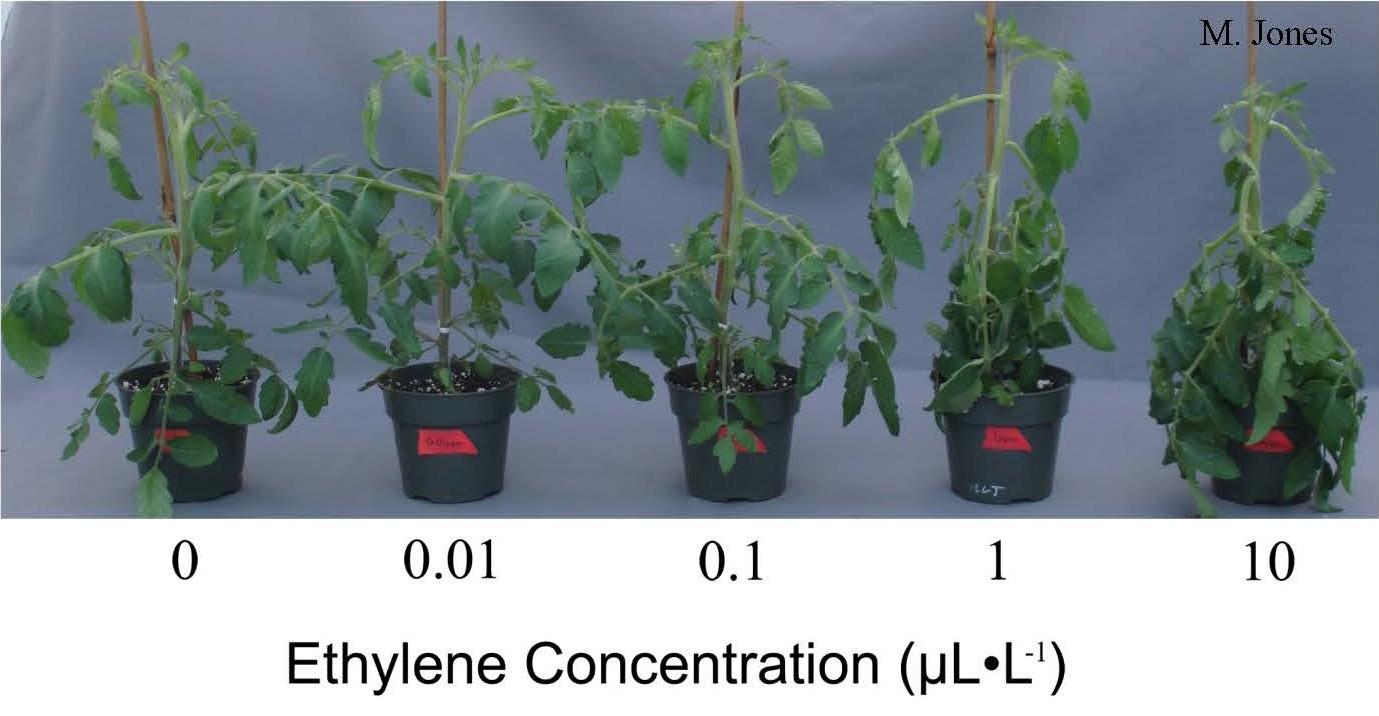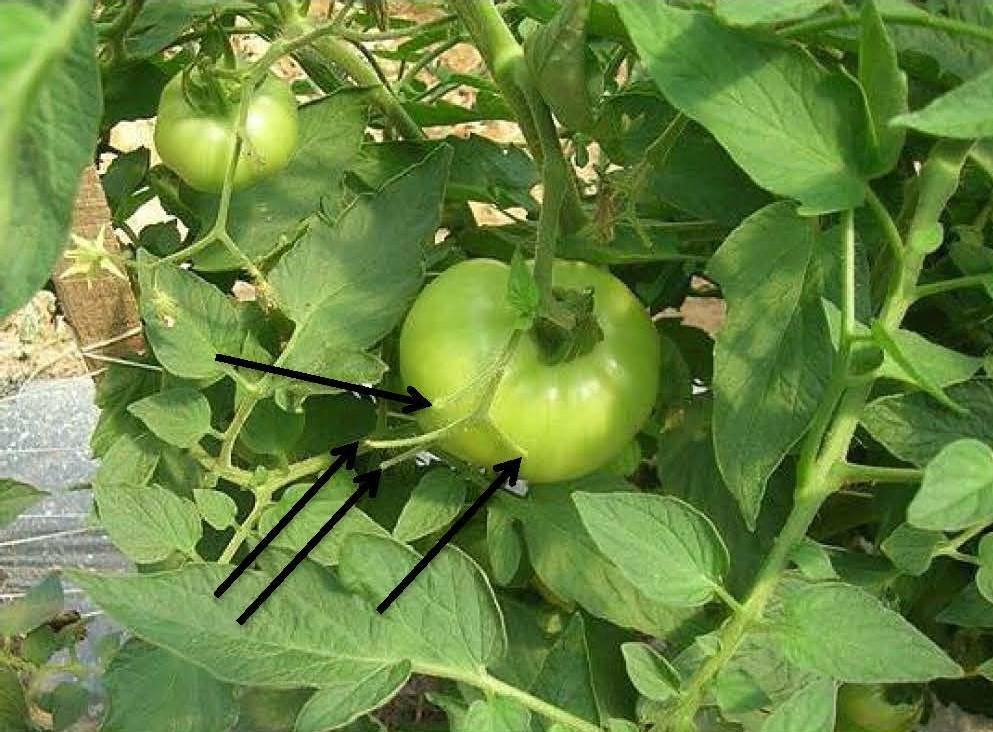Ethylene Problems in a Few Vegetable High Tunnels
Last week Gordon Johnson had an article about exhaust problems for greenhouse transplants. In Maryland we have seen a few problems with ethylene interactions with tomatoes in high tunnels. Ethylene (C2H4) occurs in trace amounts in gasoline and natural gas and is produced when these substances are burned. It also is present in wood and tobacco smoke. Ethylene also is a plant hormone produced by plants during their growth and development. However, ethylene produced through defective heating equipment can be detrimental to protected crops, because the ethylene is produced in much greater quantities. Ethylene pollution influences the activities of plant hormones and growth regulators, which affect developing tissues and normal organ development, many times without causing leaf-tissue damage.
Injury to broad-leaf plants occurs as a downward curling of the leaves and shoots (epinasty); some growers think that this is wilting in the plant and look for root or irrigation problems that are not there. But a wilting plant is flaccid or soft and droopy with the leaves collapsed, while in epinasty the plant is turgid and firm, but with the leaves turned down (fig 1). How bad the downturning of leaves is depends on the tomato variety, temperature, ethylene concentration, and the duration of exposure (see study by M. Jones at: https://u.osu.edu/greenhouse/2014/04/21/preventing-ethylene-related-losses-during-the-postproduction-care-and-handling-of-greenhouse-crops/). The epinasty then can be followed by a stunting of growth.
Other symptoms of excess ethylene exposure include the abscission of flowers (fig 2), petals or leaves; water-soaking of older leaves; chlorosis; and wilting of flowers. Crops vary in their sensitivity and response to ethylene toxicity. High temperatures and high light levels will increase the severity of ethylene damage. In high tunnels that burn propane, kerosene or use motors that burn gasoline and have poor or no ventilation, even minute amounts of this pollutant can cause some damage to tomatoes. Symptoms of ethylene damage can be subtle, especially if there are no plants grown in non-polluted air for comparison. Often times the damaged tomatoes show up in unexpected areas of a high tunnel--sometimes in the middle of the high tunnel with a group of 5-10 plants affected and no tomato plants around them with any symptoms. This is due to the patterns of air movement in high tunnels that are passively vented and not as predictive as in actively vented situations. At times air patterns can concentrate the ethylene in certain areas one week and then in different areas the next week, making diagnoses of the problem difficult.
Proper heating system installation and maintenance are the best ways to prevent problems. Propane flames should have a small yellow tip when properly adjusted and natural gas flames should be a soft blue with a well-defined inner cone. To ensure proper combustion, heater units should have a clean air intake and should be vented to the outside with a stack, which keeps exhaust gas from being drawn back into the greenhouse through the ventilation system.

